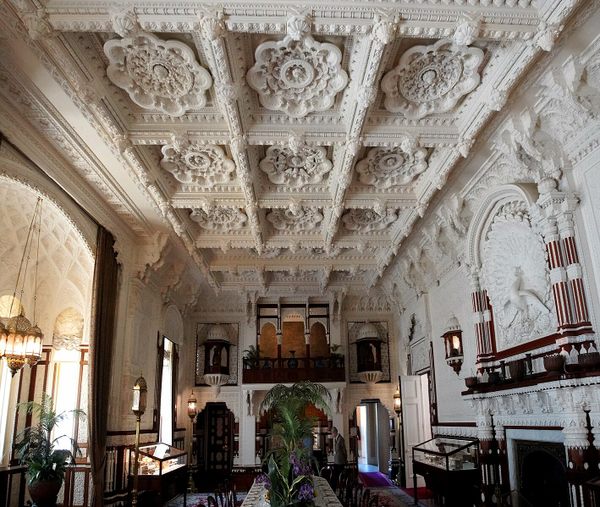The Durbar Room at Osborne House, a splendid Italianate summer residence situated in East Cowes, is a hidden gem on the Isle of Wight. Constructed between 1890 and 1891, the Durbar Room was a final, significant addition to Osborne House. It was conceived by Queen Victoria as an “Indian dining room” and served as a reception hall for entertaining guests, hosting ceremonial functions, and exhibiting gifts presented to the queen by Indian princes.
The term durbar, derived from Hindi and Urdu and ultimately from Persian, carries various meanings. In this context, it refers to a royal court where rulers conducted state affairs and held ceremonial gatherings. Upon entering the Durbar Room, visitors are transported to another world—a deliberate effect intended by Queen Victoria. Though she never traveled to India, Queen Victoria was proclaimed “Empress of India” in 1876 (by the British Parliament). Her desire to experience India firsthand was fulfilled through the creation of the Durbar Room.
Victoria’s fascination with Indian culture developed during her youth, as evidenced in her private diaries. She eagerly absorbed knowledge about Indian customs from colonial officials and Indian acquaintances, including her attendant, Abdul Karim, with whom she studied Urdu and introduced Indian cuisine to her menu.
Inspired by the Mughal aesthetics the residence of Duleep Singh (the exiled last Maharaja of the Sikh Empire), Elveden Hall in Suffolk, Queen Victoria envisioned constructing an Indian-inspired enclave in England. The architectural endeavor was entrusted to Bhai Ram Singh, a Punjabi Sikh architect and master craftsman who had trained under John Lockwood Kipling, father of Rudyard Kipling. Born in 1858 in Punjab’s Gurdaspur district, Singh was from Ramgarhia Misl, a state renowned for its carpentry. Singh’s architectural training at the Lahore School of Carpentry, later part of the Mayo School, exposed him to the Indo-Saracenic style, a fusion of Gothic and neo-classical architecture with Hindu, Mughal, and Indo-Islamic design elements.
The room boasts intricate ornamentation, including floral patterns on the ceiling, muqarnas vaulting adorned with brass lamps, and symbolic elements like a statue of Ganesha and Arabic inscriptions. The Durbar Room also features jharokhas (overhanging balconies) crafted from teak wood and served not only as a banquet hall but also as a showcase for gifts received by Queen Victoria from Indian dignitaries, particularly during her Diamond Jubilee in 1897.
Although Bhai Ram Singh’s role in designing the Durbar Room is sometimes overlooked today, he received praise from the British press and the royal family for his exceptional work. His legacy extends beyond Osborne House to significant landmarks in Lahore, including Aitchison College and the Lahore Museum, leaving an indelible mark on Punjab’s architectural heritage during the colonial era. In the room, there are 18th-century Indian miniature palaces on display, which were gifts to Edward VII, Queen Victoria’s eldest son.

